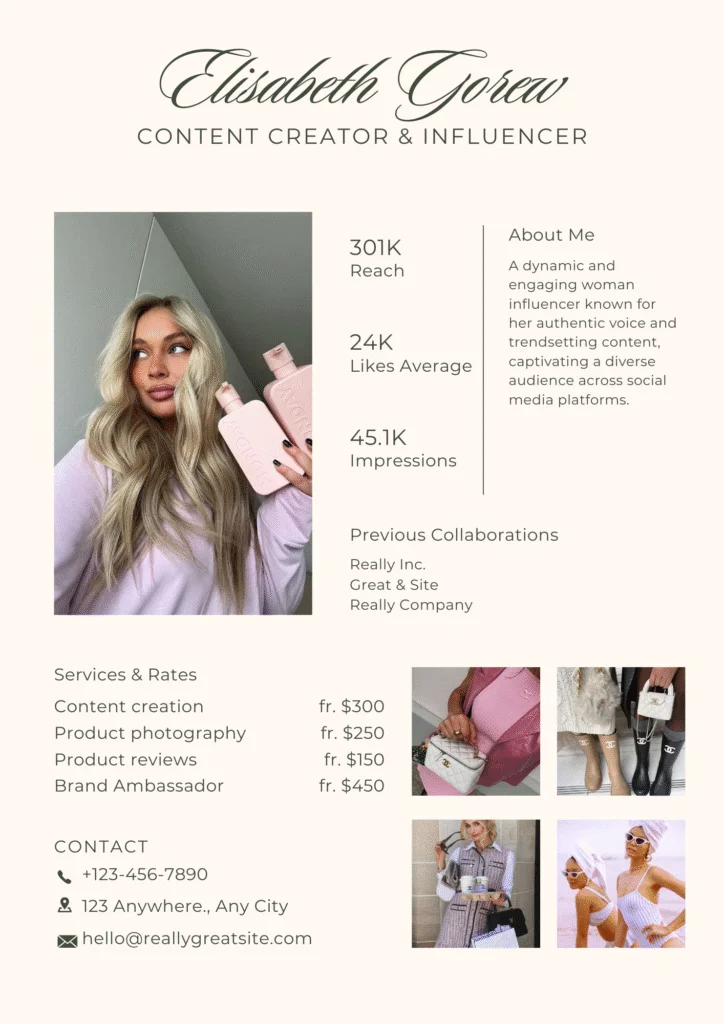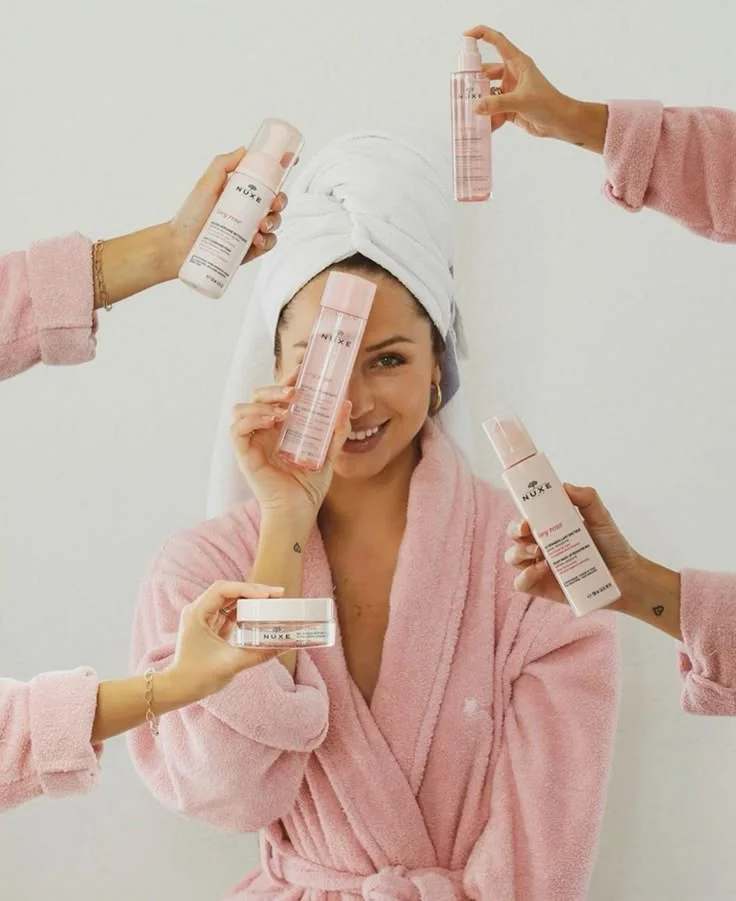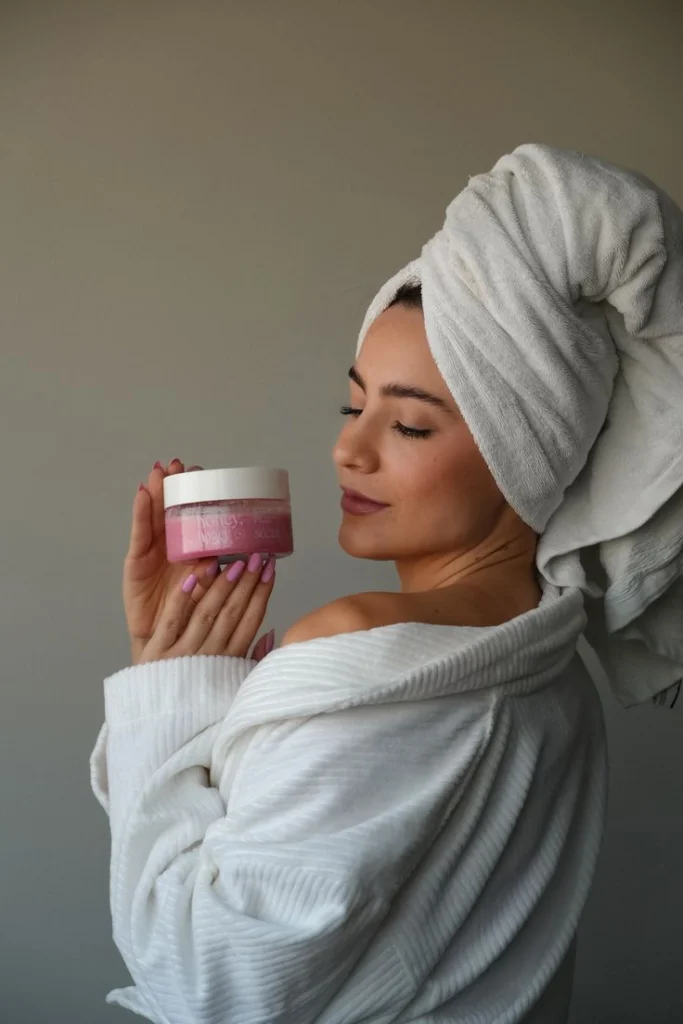
You’re probably scrolling through social media, watching creators showcase products and wondering how they landed those sweet UGC deals. The truth is, most beginners make critical mistakes that keep them stuck at zero dollars while others quietly build five-figure creator businesses. Your follower count doesn’t matter as much as you think, and the brands you should pitch aren’t the obvious ones everyone else targets. Here’s what successful creators actually do differently.
Define Your Niche and Content Style Before Reaching Out to Brands
Why do some creators land their first $100 deal within weeks while others struggle for months? The answer lies in strategic positioning before you ever pitch a brand.
You need to define your niche with laser precision. Are you the fitness creator who reviews workout gear, or the beauty enthusiast testing skincare routines? Brands crave clarity, not confusion.
Next, analyze influencer marketing trends in your chosen space. What content formats are performing best? Which products are gaining traction? This research positions you as industry-aware.
Then identify target audience demographics for your niche. Brands want creators who understand their customers’ age, interests, and buying habits. When you can articulate exactly who you reach, you become irresistible to the right companies seeking authentic partnerships.
Smart creators practice strategic decision-making by pausing to assess which brands align with their long-term goals rather than jumping at every opportunity.
Research Which Brands Actually Work With Micro-Creators

Most micro-creators waste hours pitching brands that never work with smaller accounts. You need to research smarter, not harder.
Start by checking brands’ recent partnerships on Instagram and TikTok. Look for creators with 1K-10K followers in sponsored posts. These brands already understand micro-creator value and benchmark micro influencer rates appropriately.
Use tools like Creator.co or AspireIQ to find brands actively seeking smaller creators. Search hashtags like #microinfluencer and #ugccreator to discover which companies are posting collaboration callouts.
Focus on direct-to-consumer brands, startups, and local businesses. They’re more likely to work with micro-creators than massive corporations. When you identify high potential micro niches, you’ll find brands desperate for authentic content in underserved markets.
Document successful partnerships you discover – this research becomes your goldmine for targeted outreach. Use social media management tools like Hootsuite to track and organize the brands you’ve researched across multiple platforms from one central dashboard.
15 brands that actively work with micro-creators for user-generated content:
Beauty & Personal Care
- Glossier – Partners with everyday users to showcase real skin and authentic product experiences across social platforms
- The Ordinary – Collaborates with skincare enthusiasts to demonstrate before/after results and routine integration
- Fenty Beauty – Works with diverse micro-influencers to highlight shade inclusivity and real-world wear
Fashion & Lifestyle
4. ASOS – Features customer photos and styling content through their #AsSeenOnMe campaign
5. Reformation – Partners with sustainable fashion advocates and everyday style creators
6. Everlane – Collaborates with transparency-focused creators who align with their ethical manufacturing message
Food & Beverage
7. Chipotle – Engages food creators for recipe content, customization ideas, and behind-the-scenes content
8. HelloFresh – Works with home cooking enthusiasts to show meal prep and family dinner content
9. Starbucks – Partners with coffee lovers for seasonal drink content and store experience posts
Tech & Apps
10. Canva – Collaborates with small business owners and creative hobbyists to showcase design capabilities
11. Notion – Works with productivity enthusiasts and students to demonstrate organizational systems
Health & Fitness
12. Gymshark – Partners with fitness micro-creators for workout content and athleisure styling
13. Peloton – Collaborates with home fitness enthusiasts to share workout achievements and lifestyle integration
Home & Lifestyle
14. Target – Features real customer homes and styling through their partnership programs and hashtag campaigns
15. Sephora – Works with beauty enthusiasts of all follower sizes through their Beauty Insider Community program
Create a Portfolio That Showcases Your UGC Skills
Before you reach out to brands, you’ll need a portfolio that proves you can create scroll-stopping content. Your portfolio becomes your power play—it’s what transforms you from another hopeful creator into someone brands can’t ignore.
Start by creating 6-8 mock UGC videos using products you already own. Develop branded photo samples that look professional, even if they’re shot on your phone. Show brands you understand their visual language and can deliver content that drives sales.
Showcase diverse content styles to prove your versatility. Include unboxing videos, tutorials, lifestyle shots, and before-and-after content. Mix up your angles, lighting, and settings to demonstrate your creative range.
Consider creating a vision board to help you visualize and focus on the specific types of brand partnerships you want to attract, which can guide your portfolio development with more intentional direction.
Set Up Professional Social Media Profiles That Convert
Your portfolio shows you can create amazing content, but brands need to see you’re a professional they can trust to represent their products. Clean up your social media profiles to showcase your expertise and attract paying opportunities.
Professional social media profiles are your gateway to lucrative brand partnerships and premium UGC opportunities.
Transform your accounts into conversion machines that command respect:
- Write compelling bios – Include “UGC Creator” in your title, list your niche, and add a professional email for inquiries
- Post consistently high-quality content – Share behind-the-scenes footage, client testimonials, and your best UGC samples to boost account engagement
- Engage authentically with your audience – Respond to comments, ask questions, and build genuine connections to optimize follower growth
Choose 2-3 platforms to focus your efforts on rather than spreading yourself too thin across every social media channel, as maintaining a consistent presence requires dedicated time and energy to build meaningful influence.
Build a Simple Media Kit Without Expensive Design Tools

Many creators hold off on reaching out to brands because they think they need a fancy, expensive media kit designed by professionals. You don’t! You can create a compelling media kit using free tools like Canva, Google Docs, or even PowerPoint.
Your media kit should include your bio, follower demographics, engagement rates, and examples of your best content. Focus on showcasing your personality and authentic voice rather than perfect graphics. Content template creation becomes easier when you establish a simple, consistent format you can reuse.
These budget friendly branding solutions work just as effectively as expensive alternatives. Keep your design clean with readable fonts and your brand colors. Include your rates, contact information, and collaboration examples. Consider using pre-designed templates to streamline your media kit creation process and save valuable time. Recall, brands care more about your authentic content and engaged audience than flashy design elements.
Find Your First Target Brands Using Free Research Methods

While you don’t need to hire expensive market research firms, finding the right brands to pitch requires strategic thinking and smart detective work. You can discover relevant hashtags by scrolling through Instagram and TikTok to see what your target audience engages with most. This research helps you identify underserved brand verticals where competition might be lighter.
Start your brand hunt with these proven methods:
- Check competitor partnerships – Look at creators in your niche and see which brands they’re working with regularly
- Browse smaller retail websites – Many emerging brands need UGC but can’t afford big influencers yet
- Search LinkedIn for brand managers – Find decision-makers at companies you’d love to work with
Focus on brands with 10K-100K followers who actively post UGC from other creators. Remember that some of the most successful businesses started with unconventional ideas that seemed strange at first but found their perfect audience through targeted marketing.
Craft Email Subject Lines That Get Opened by Brand Managers
A cluttered inbox means brand managers scan subject lines for just seconds before deciding whether to open your email. You need subject lines that instantly grab attention and communicate value.
Your brand outreach strategies should start with lines like “UGC Creator – Ready to Showcase [Brand Name]” or “[Your Niche] Content Creator Partnership Proposal.” These templates work because they’re clear and professional.
Email personalization techniques make the difference between ignored messages and opened ones. Reference their recent product launch or campaign: “Love Your New Fall Collection – UGC Partnership?” This shows you’ve done your research.
Keep subject lines under 50 characters so they display fully on mobile devices. Avoid spam triggers like “FREE” or excessive exclamation points. Focus on value creation rather than what you can get from the brand, as this approach naturally attracts better partnership opportunities. Test different approaches and track which ones generate responses for your future campaigns.
Write Pitch Emails That Focus on Value, Not Follower Count
Getting your email opened is just the first step – now you need content that makes brands want to work with you. Your pitch should highlight what you bring to the table, not your follower numbers. Brands care more about authentic engagement and quality content than massive audiences.
Focus your value focused messaging on these key points:
- Your unique perspective – What makes your content style different from other creators?
- Professional portfolio samples – Include 2-3 of your best UGC examples that show versatility
- Specific results you can deliver – Mention engagement rates, conversion potential, or audience demographics
Remember to establish an emotional connection through your authentic brand story, as this transforms strangers into potential brand partners who genuinely want to collaborate with you.
Use Cold Outreach Templates That Actually Work
Because most creators send generic, template-sounding emails, you’ll stand out immediately with a personalized approach that feels genuine. Your personalized outreach should mention specific products you’ve seen from their brand and explain why you connect with their mission.
Start with their brand name and reference a recent campaign or product launch. This shows you’ve done your homework. Then, briefly introduce yourself and your content style without mentioning follower counts.
Focus your targeted campaigns on 5-10 brands at a time rather than mass-emailing hundreds. Quality beats quantity every time! Include 2-3 relevant content samples that align with their aesthetic.
End with a clear call-to-action asking for a brief call or collaboration discussion. Keep emails under 150 words—busy marketing managers appreciate brevity and directness.
Consider expanding beyond UGC into social media management services for brands you work with, as this can create longer-term partnerships and higher income potential.
Leverage Your Existing Network for UGC Opportunities

Most creators overlook the goldmine sitting right in their contacts list when searching for their first UGC opportunities. Your existing network holds untapped potential that can jumpstart your creator journey faster than cold outreach.
Your network is already filled with people who can open doors to your first creator collaborations—you just need to look.
Start by auditing your connections systematically. Look through your social media followers, former colleagues, and personal contacts. You’ll be surprised how many work at companies that need content creators.
- Reach out to friends at startups – They’re often enthusiastic to target micro influencers and have flexible budgets
- Connect with former coworkers – They can identify brand collaborators within their current companies
- Ask family members about their workplace needs – Many businesses need authentic content
Your warm connections trust you already, making these conversations feel natural rather than sales-heavy. If you’re an educator looking to diversify your income, consider that teachers already have valuable skills that translate perfectly to content creation, just like creating educational worksheets can generate passive income through platforms like Teachers Pay Teachers.
Apply to UGC Platforms and Creator Marketplaces
While networking opens doors through personal connections, UGC platforms and creator marketplaces offer structured pathways to consistent paid opportunities. These platforms connect you directly with brands seeking fresh content creators like yourself.
Start with established marketplaces like AspireIQ, Grin, and Creator.co. They’ll match your skills with relevant brand partnerships. Complete your profile thoroughly – brands want creators who present themselves professionally.
Don’t overlook smaller, niche platforms either. They often have less competition and higher acceptance rates. Apply to 5-10 platforms weekly to maximize your chances.
Remember to leverage relationships you’ve built through networking when applying. Many platforms value referrals from existing successful creators. Network effectively by engaging with other creators’ content and participating in platform communities. This strategic approach accelerates your path to that first $100 deal!
Join Facebook Groups Where Brands Post Creator Calls
Facebook groups have become goldmines for creators hunting their first paid opportunities, with hundreds of brands posting daily casting calls for content creators. These communities let you leverage influencer marketing connections directly with decision-makers who control budgets and campaigns.
You’ll discover authentic opportunities that bypass traditional gatekeepers and lengthy application processes. To optimize group engagement, focus on these proven strategies:
- Post consistently in introduction threads – Share your niche, rates, and portfolio links weekly
- Respond to casting calls within 2-4 hours – Brands often select creators quickly from early applicants
- Build relationships with group admins – They frequently receive exclusive brand partnerships first
Search for groups using terms like “UGC creators,” “brand collaborations,” and “influencer opportunities.” Join 5-10 active communities where brands regularly post $50-$500 creator calls for beginners.
Search Hashtags to Find Brands Seeking Content Creators
Beyond group networking, hashtags open another powerful discovery method for connecting with brands actively recruiting creators. You’ll want to optimize search queries using strategic hashtag combinations that brands commonly use when posting collaboration opportunities.
Start with basic terms like #ugccreator, #contentcreator, #brandcollaboration, and #influencermarketing. Then expand your search to include specific niches like #beautycreators or #fitnesscollabs. Don’t forget to analyze trending hashtags in your industry weekly – they often reveal emerging brand campaigns.
Set aside 30 minutes daily to scroll through these hashtags on Instagram, TikTok, and Twitter. You’ll discover smaller brands posting creator callouts that others might miss! Save promising posts and engage meaningfully with their content before reaching out. This proactive approach positions you ahead of creators who only wait for opportunities to find them.
Respond to Brand Stories and Posts Strategically

Strategic engagement with brand content creates genuine connections that transform casual followers into potential collaborators. You’ll want to analyze competitor brand content to identify engagement patterns that work. Understanding their response strategies gives you powerful insights into what captures brand attention.
When you understand brand voice and aesthetic, your responses align perfectly with their messaging. This strategic approach demonstrates you’re serious about collaboration, not just seeking freebies.
Here’s your engagement playbook:
- Comment thoughtfully on their posts with specific compliments about products or campaigns
- Share their stories to your audience with genuine recommendations and tag them
- Ask strategic questions about upcoming launches or product development in their comments
Your responses should feel authentic while showcasing your creativity. Brands notice creators who consistently engage meaningfully rather than dropping generic comments everywhere.
Create Spec Content That Demonstrates Your Abilities
While brands receive countless pitches daily, nothing speaks louder than seeing your actual work in action. Creating spec content showcases your skills before you’re even hired. Choose products you genuinely use and love – this authenticity shines through your content.
Develop unique content ideas that align with each brand’s aesthetic and values. Study their existing campaigns, then put your creative spin on similar concepts. Film yourself using their products naturally, highlighting benefits without sounding scripted.
Focus on authentic brand storytelling by weaving the product into your daily routine. Show real problems the product solves for you. This approach demonstrates your ability to create engaging, relatable content that drives results.
Having 3-5 strong spec videos in your portfolio gives brands confidence in your capabilities and increases your chances of landing paid partnerships.
Price Your First UGC Deals to Win While Avoiding Undervaluation
Once you’ve built a portfolio of compelling spec content, pricing your first UGC deals becomes your next challenge. You need to set competitive rates that win contracts without selling yourself short. Research what other creators charge for similar work and understand licensing rights before quoting prices.
Most beginners price between $25-75 per deliverable for their first deals. Here’s how to price strategically:
- Start with competitive rates slightly below market average to build initial relationships
- Factor in usage rights – broader licensing commands higher fees
- Bundle multiple deliverables for better perceived value
Don’t undervalue your skills just because you’re new. You’re providing professional content that drives real business results! Price confidently while remaining competitive. Recall, brands invest in UGC because it works, so your content has genuine value worth fair compensation.
Negotiate Contracts That Protect Your Interests as a Beginner
How can you protect yourself when brands send over their first contract offers? Don’t sign immediately, even when you’re excited about landing your first deal! Read every clause carefully and look for red flags like unlimited revisions or unclear deliverables.
Always set payment terms upfront – specify your rate, when you’ll be paid, and what happens if they’re late. Most creators request 50% upfront for their first few deals. You’ll also need to understand licensing rights, which determine how brands can use your content. Can they run your video forever? Use it on billboards? Repost on different platforms?
Don’t hesitate to ask questions or request changes. Professional brands expect negotiation, and you’re building your reputation as someone who values their work appropriately.
Understand Usage Rights and What They Mean for Your Rates
Usage rights directly impact how much you should charge for your UGC content. When brands get exclusive rights, you’re giving up future earning potential from that same content. You deserve higher compensation for broader usage terms.
Here’s what affects your pricing power:
- Exclusive vs. non-exclusive rights – Exclusive usage means you can’t repurpose content elsewhere, so charge 50-100% more
- Duration of usage – Content used for 6 months should cost less than perpetual usage rights
- Platform scope – Instagram-only usage differs from omnichannel campaigns across all platforms
Master rights management by asking specific questions during usage rights negotiation. Where will they post your content? For how long? Can you repost it? These details determine your rate. Don’t undersell yourself – usage rights are valuable assets you control.
Plan Your Content Calendar Around Brand Deliverables
While managing multiple brand partnerships might feel overwhelming at first, creating a strategic content calendar becomes your secret weapon for staying organized and meeting every deadline. You’ll want to track each brand’s seasonal calendar and identify their peak promotional periods like Black Friday or back-to-school season. This knowledge helps you plan content that aligns perfectly with their marketing goals.
Map out your deliverables on a monthly view, marking due dates and posting schedules. Color-code different brands to see your workload at a glance. Don’t forget to build in buffer time for revisions and unexpected requests.
When you’re proactive about planning, you’ll deliver higher-quality content and position yourself as the reliable creator brands want to work with repeatedly.
Shoot High-Quality UGC Content With Basic Equipment
Anyone can create professional-looking UGC content without expensive equipment if you know the right techniques. Your smartphone camera combined with smart lighting techniques can produce stunning results that brands love.
Master these essential UGC production fundamentals:
- Find natural light sources – Position yourself near windows during golden hour or use simple LED ring lights for consistent illumination
- Stabilize your shots – Use your phone’s built-in stabilization or prop it against books and boxes for steady footage
- Edit with free tools – Download editing software like CapCut or InShot to add polish without breaking your budget
You’ll dominate the competition by focusing on clean composition and clear audio over fancy gear. Brands care more about authentic storytelling than expensive equipment, so start creating with what you have right now!
Edit Your Videos Using Free Mobile Apps and Software
Recording great footage is just half the battle – now you need to transform your raw clips into polished UGC content that makes brands want to pay you. You don’t need expensive software to create professional-looking videos that command premium rates.
Mobile video editing tools like CapCut, InShot, and VSCO offer powerful features right from your phone. These apps let you trim clips, add connections, and insert text overlays without spending a dime.
For desktop editing, free video editing software like DaVinci Resolve and OpenShot provide advanced capabilities that rival paid programs.
Focus on clean cuts, seamless connections, and consistent audio levels. Add captions for accessibility and engagement. Keep your edits tight and purposeful – brands appreciate creators who deliver polished content that’s ready to publish immediately.
Write Captions That Drive Engagement and Conversions
Your caption can make or break a $100+ UGC deal, even with perfect video content. Brands pay premium rates for creators who understand that engagement focused captions turn viewers into customers.
Perfect video content means nothing if your caption can’t turn viewers into paying customers for premium UGC deals.
You need to hook readers within the first line, then guide them toward action. Conversion optimized captions follow a proven formula that brands desperately want.
Here’s your power formula for captions that convert:
- Start with a question or bold statement that stops the scroll
- Share authentic personal experience with the product’s benefits
- End with a clear call-to-action using phrases like “grab yours” or “link in bio”
Your captions should feel like conversations with friends, not sales pitches. Include specific results, emotions, and relatable moments. This approach transforms casual viewers into engaged followers who actually buy what you’re promoting.
Meet Deadlines and Communicate Professionally Throughout Projects
Missing deadlines kills more UGC careers than poor content ever will. Brands value reliability above everything else, and they’ll recall creators who deliver on time.
Set realistic timelines when discussing project deliverables. If you need three days to create content, don’t promise it in two. Buffer time protects your reputation and reduces stress.
Communicate professionally throughout every project. Send updates when you start filming, encounter challenges, or finish editing. Brands appreciate transparency and proactive communication.
Use professional language in all correspondence. Skip the casual slang and emojis in business emails. Your communication style reflects your brand’s maturity and trustworthiness.
When you consistently meet deadlines and communicate professionally, brands will prioritize you for future campaigns. This reliability separates successful creators from weekend hobbyists.
Deliver Content in the Formats Brands Actually Need
Beyond timing and communication, brands need content delivered in specific technical formats that match their marketing channels. You can’t just send a single video file and hope it works everywhere. Smart creators understand that different platforms require different specs, and delivering content formats correctly sets you apart from amateur competitors.
Smart creators deliver content in platform-specific formats while amateurs send generic files and wonder why brands don’t return.
Master these essential content delivery channels requirements:
- Social media specs – Instagram Stories (9:16), feed posts (1:1), and TikTok vertical videos
- File formats – MP4 for videos, high-res JPEGs for photos, and raw files when requested
- Multiple versions – Create 15-second, 30-second, and 60-second cuts from longer content
When you deliver exactly what brands need without them asking twice, you’ll become their go-to creator. This attention to detail transforms one-time gigs into ongoing partnerships worth hundreds of dollars monthly.
Handle Revision Requests Without Losing Money
Although revision requests feel like setbacks, they’re actually normal parts of the UGC business that you can handle profitably with the right approach. Smart creators negotiate favorable revision policies upfront by including specific terms in their contracts.
Limit free revisions to two rounds maximum, then charge 50% of your original rate for additional changes.
When you handle revision requests professionally, you’ll maintain client relationships while protecting your income. Respond quickly with clear timelines for deliverables. Ask specific questions about what needs changing instead of conjecturing. Document all feedback in writing to avoid confusion later.
Set boundaries early by explaining your revision process during initial discussions. This prevents scope creep and establishes your professionalism. Recall, brands respect creators who value their time and expertise!
Ask for Testimonials and Build Case Studies From Successful Campaigns
When campaigns deliver great results, you’ve earned the right to showcase that success to future clients. Smart creators ask for customer feedback immediately after completing successful projects. This feedback becomes your golden ticket to higher-paying deals.
Don’t just collect testimonials – develop branded case studies that tell complete success stories. Document specific metrics like engagement rates, conversion percentages, and revenue increases. Brands love seeing concrete proof of your impact.
Here’s how to maximize your testimonial strategy:
- Request testimonials within 48 hours of campaign completion while results are fresh
- Create one-page case studies featuring client quotes, metrics, and before/after comparisons
- Use testimonials as social proof in your pitch emails and portfolio presentations
These case studies become your most powerful sales tools, proving you deliver results that justify premium rates.
Turn One-Time Clients Into Long-Term Brand Partnerships
Building strong case studies opens the door to something even more valuable – repeat business from satisfied clients. You’ll transform one-off projects into lucrative, ongoing partnerships that pay consistently.
Start nurturing relationships immediately after delivering content. Send follow-up messages asking about campaign performance and offering additional support. This ongoing communication keeps you top-of-mind when they need fresh content.
Follow up immediately after delivery—ask about performance, offer support, and stay top-of-mind for future content needs.
Proactively pitch new ideas for upcoming seasons, holidays, or product launches. Your creative brainstorming shows initiative and positions you as a strategic partner, not just another creator. Suggest monthly retainers or multi-campaign packages at discounted rates.
Long-term partnerships typically pay 20-40% more than one-time deals because brands value consistency and trust. You’ll spend less time prospecting and more time creating, building a sustainable income stream that grows over time.
Scale Your UGC Business Beyond Your First $100 Deal
Once you’ve locked in that first $100 deal, it’s time to ramp up your operations and start thinking bigger. You’re not just a beginner anymore—you’re a proven creator ready to dominate this space.
Define ideal client profile by analyzing your successful partnerships. Which brands paid quickly? Who gave clear briefs? Target similar companies in your outreach efforts.
Streamline outreach process with templates and tracking systems. Here’s your scaling blueprint:
- Batch your outreach sessions – Send 20-30 emails twice weekly instead of random daily messages
- Raise your rates gradually – Increase prices by $25-50 with each new tier of clients you attract
- Create content packages – Bundle multiple deliverables to command $300-500 deals instead of single posts
You’ve got momentum now. Use it to build the UGC empire you deserve!
Conclusion
You’re now equipped with 28 proven strategies to land your first $100 UGC deal. Start by defining your niche and building that professional portfolio today. Research brands, craft compelling pitches, and don’t be afraid to negotiate your worth. Recall, every successful creator started exactly where you are now. Your first deal is just the beginning of building a profitable UGC business. Take action on these tips and watch your creator income grow!



Leave a Reply